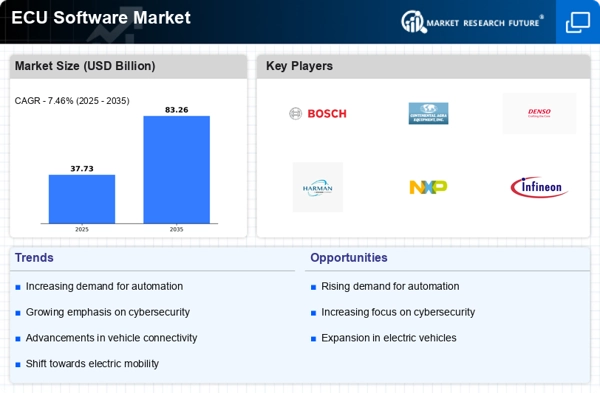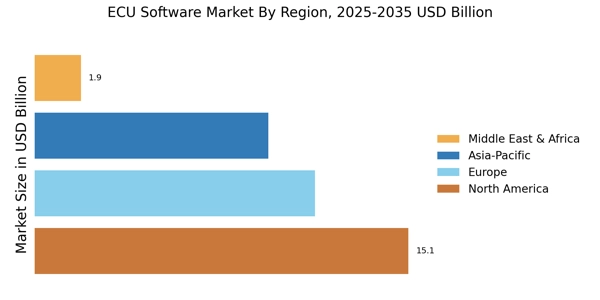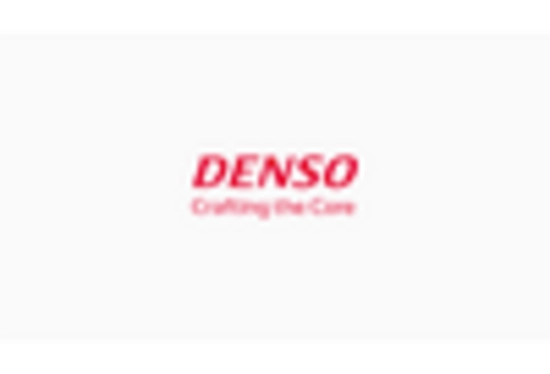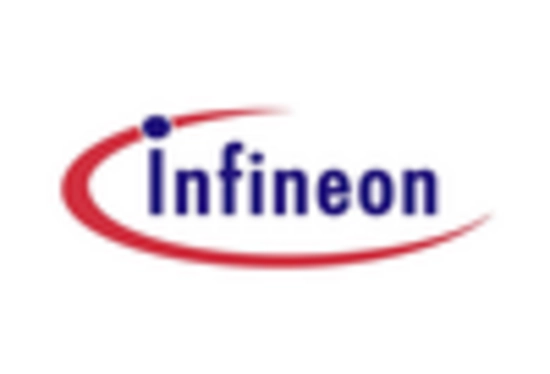Rising Demand for Electric Vehicles
The increasing adoption of electric vehicles (EVs) is a pivotal driver for the ECU Software Market. As manufacturers pivot towards electrification, the complexity of vehicle systems escalates, necessitating advanced ECU software to manage energy consumption, battery performance, and regenerative braking systems. Reports indicate that the EV market is projected to grow at a compound annual growth rate (CAGR) of over 20% in the coming years. This surge in demand for EVs directly correlates with the need for sophisticated ECU software solutions that can optimize vehicle performance and enhance user experience. Consequently, the ECU Software Market is likely to witness substantial growth as automakers invest in innovative software solutions to meet the evolving requirements of electric mobility.
Growing Focus on Vehicle Personalization
The rising consumer demand for vehicle personalization is emerging as a notable driver for the ECU Software Market. As consumers seek unique driving experiences, automakers are increasingly offering customizable features that require sophisticated ECU software. This trend encompasses everything from personalized infotainment systems to adaptive driving modes tailored to individual preferences. Market analysis indicates that the automotive personalization market is expected to witness substantial growth, with consumers willing to pay a premium for tailored features. Consequently, the ECU Software Market is likely to expand as manufacturers invest in software solutions that enable a high degree of personalization, enhancing customer satisfaction and loyalty.
Regulatory Compliance and Safety Standards
The stringent regulatory landscape surrounding vehicle safety and emissions is a crucial driver for the ECU Software Market. Governments worldwide are implementing more rigorous standards to enhance vehicle safety and reduce environmental impact. For instance, regulations mandating advanced safety features such as automatic emergency braking and lane-keeping assistance are becoming commonplace. This regulatory pressure compels manufacturers to invest in advanced ECU software that not only meets compliance requirements but also enhances vehicle performance. The ECU Software Market is likely to expand as companies strive to develop software solutions that align with evolving regulations while ensuring consumer safety and environmental sustainability.
Advancements in Autonomous Driving Technologies
The pursuit of autonomous driving technologies is significantly influencing the ECU Software Market. As automotive manufacturers and technology firms invest heavily in research and development, the demand for advanced ECU software that can process vast amounts of data in real-time is escalating. The market for autonomous vehicles is expected to reach several billion dollars by the end of the decade, driven by innovations in artificial intelligence and machine learning. This trend necessitates the integration of complex software systems capable of ensuring safety, navigation, and vehicle-to-everything (V2X) communication. Thus, the ECU Software Market is poised for growth as it adapts to the requirements of increasingly autonomous vehicle systems.
Integration of Internet of Things (IoT) in Vehicles
The integration of Internet of Things (IoT) technologies into vehicles is reshaping the ECU Software Market. As vehicles become increasingly connected, the demand for software that can manage and analyze data from various sensors and devices is surging. IoT-enabled vehicles can provide real-time data on vehicle performance, driver behavior, and maintenance needs, enhancing the overall driving experience. The market for connected vehicles is projected to grow significantly, with estimates suggesting that the number of connected cars could reach over 500 million by 2030. This trend necessitates the development of robust ECU software solutions capable of handling the complexities of connected vehicle ecosystems, thereby driving growth in the ECU Software Market.

















Leave a Comment